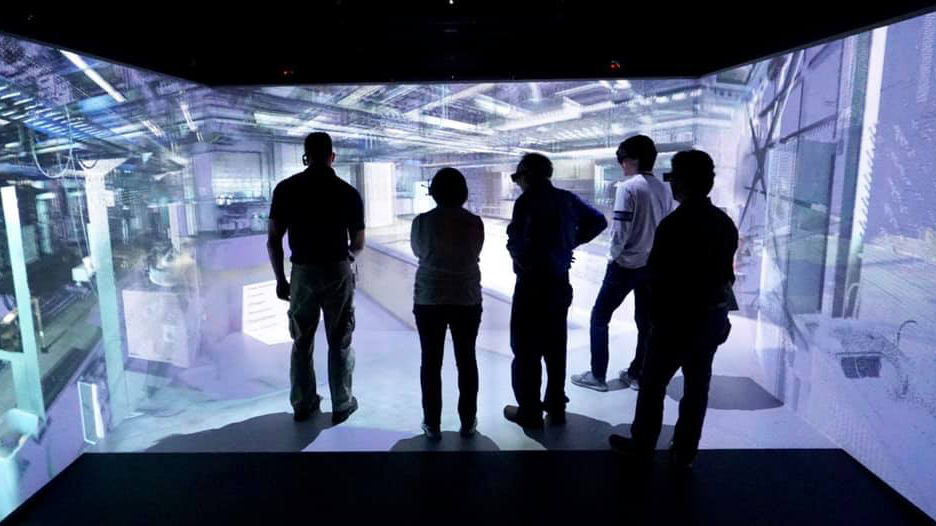
March 2, 2021
Imagine studying a protein by walking through its three-dimensional structure. Or researching traffic patterns by standing alongside a virtual highway. Or safely exploring the structural integrity of a house while it’s on fire. University of Missouri engineers will soon have the capability to do these things, thanks to a Cave Automatic Virtual Environment (CAVE) opening this year in Lafferre Hall.
A CAVE is a small facility that provides users with an immersive virtual environment. It consists of adjustable walls, a floor and motion sensors that track movement. Unlike other types of virtual reality, users do not have to wear bulky headsets to experience their 3D surroundings.
The National Science Foundation recently awarded a team of Mizzou engineers a grant to purchase and implement the CAVE. It will be the only one of its kind in Missouri and one of few in the Midwest, said Ye Duan, associate professor of electrical engineering and computer science.
“The CAVE has a lot of possibilities to test hypotheses in lifelike environments without the dangers or risks,” he said. “We are excited to bring it to campus. There are a lot of opportunities for collaboration not only across Mizzou but also across the state.”
Duan is principal investigator for the grant. He and the project team are setting up the facility this semester and plan to begin pilot projects this summer. They expect it to be fully operational in the fall.
A headset-free experience
What makes the CAVE advantageous is that it does not require virtual reality (VR) headsets. That means those using the facility are able to see themselves and those around them within the virtual environment.
“VR headsets are immersive but limiting in terms of the things you are able to do,” said Prasad Calyam, associate professor and director of cyber education. “There are cyber sickness issues associated with the headsets and limitations to the displays.”
VR headsets can cause neck fatigue and eye strain as the field of view is narrower than human vision.
The goggle-free environment will allow researchers to observe those using the technology. Those studying the CAVE will be able to see how a person is responding to their virtual surroundings, including observing upper facial expressions.
The team working on CAVE projects includes researchers from across campus. The system will be integrated into at least 10 courses at Mizzou, reaching more than 200 students per year.



